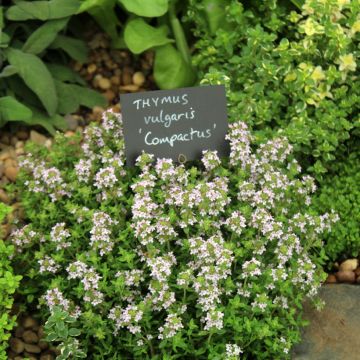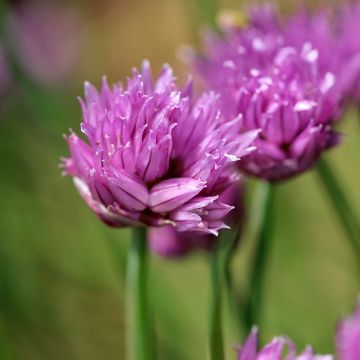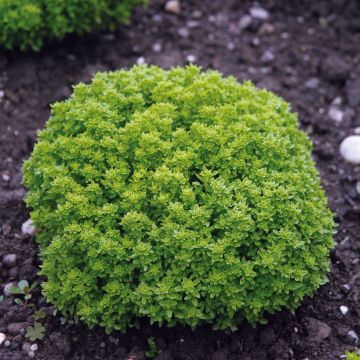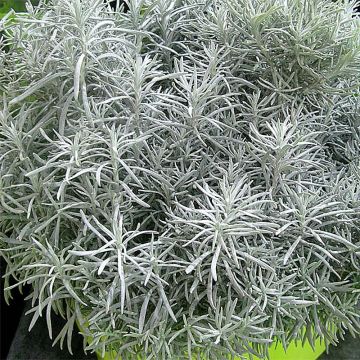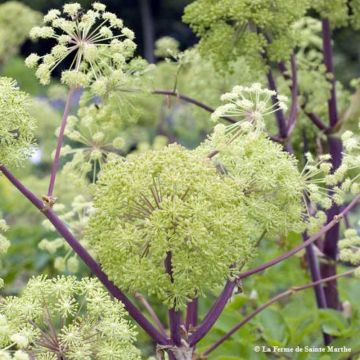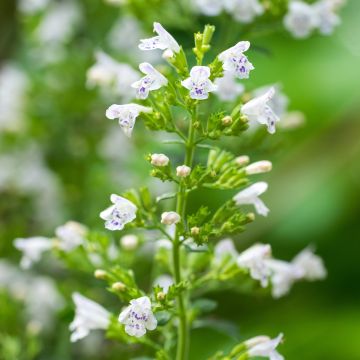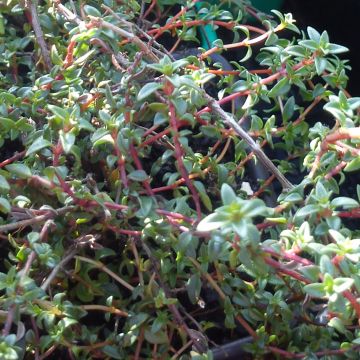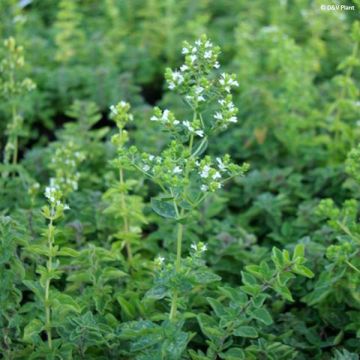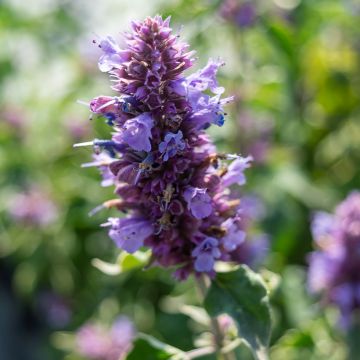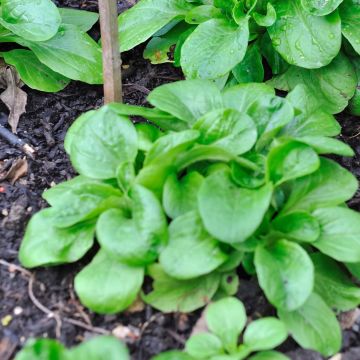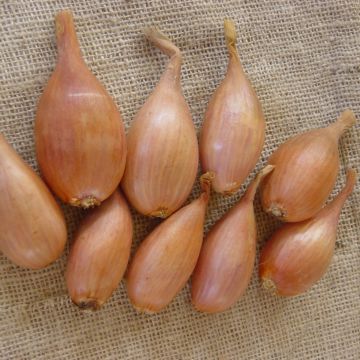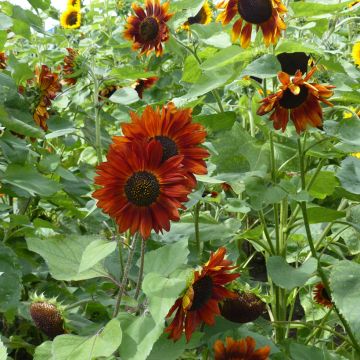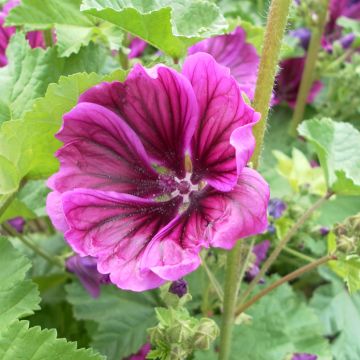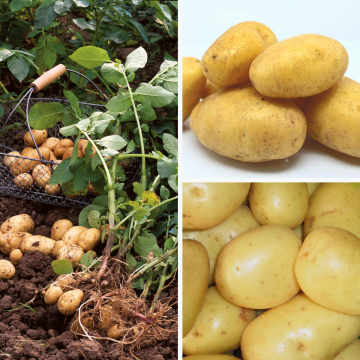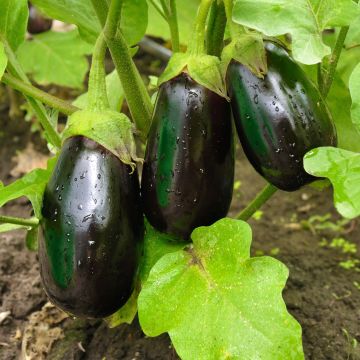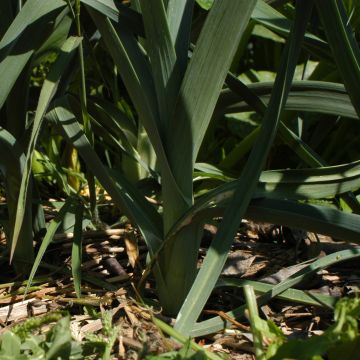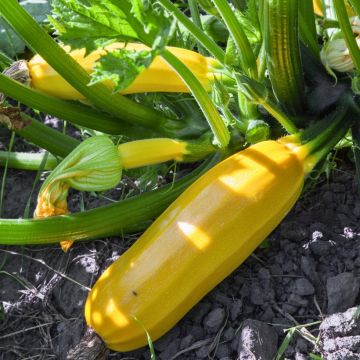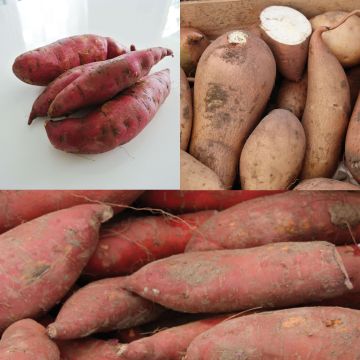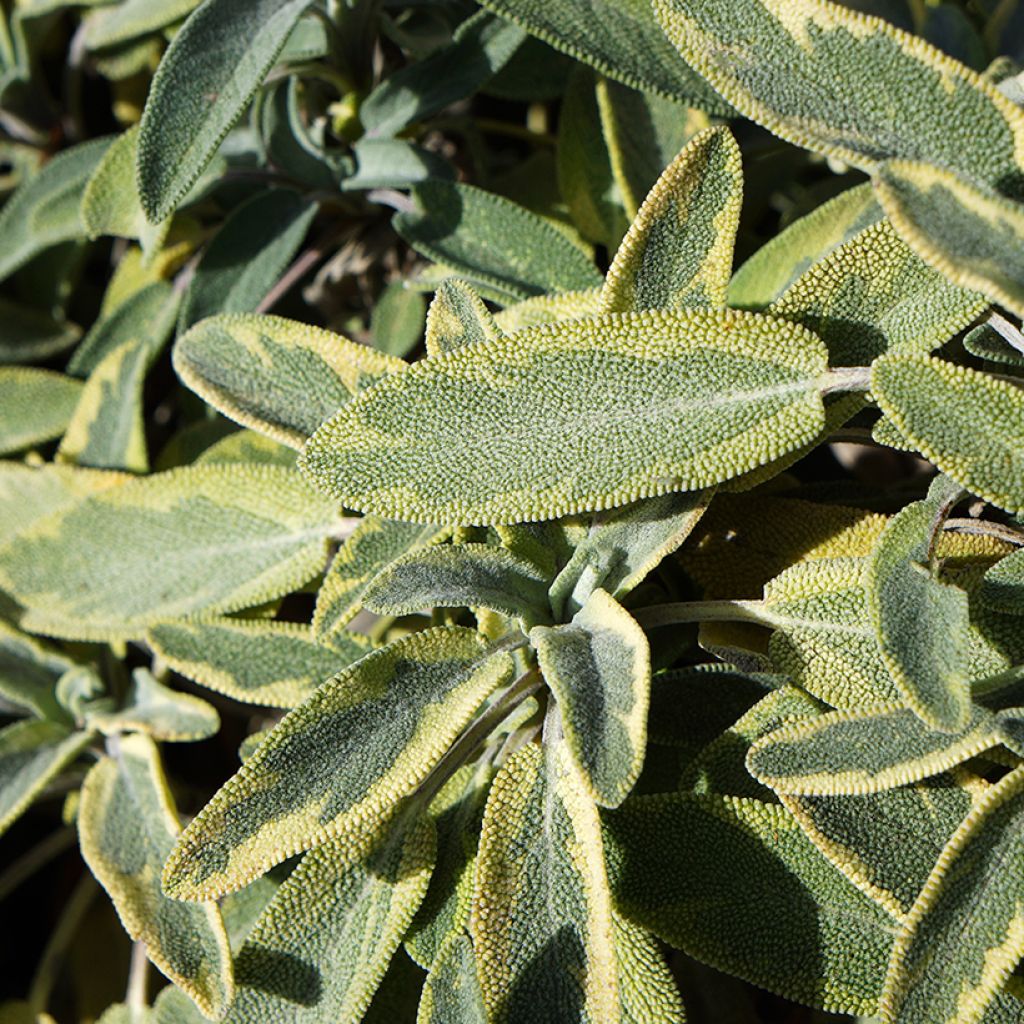

Sauge officinale Berggarten Variegated - Salvia officinalis
Salvia officinalis Berggarten Variegated
Salvia officinalis Berggarten Variegated
Common Sage, Garden Sage, Culinary Sage, Broadleaf Sage
This item cannot be shipped to the selected country
Delivery charge from €5.90
Delivery to Corse prohibited
More information
Schedule delivery date,
and select date in basket
This plant carries a 6 months recovery warranty
More information
We guarantee the quality of our plants for a full growing cycle, and will replace at our expense any plant that fails to recover under normal climatic and planting conditions.
From €5.90 for pickup delivery and €6.90 for home delivery
Express home delivery from €8.90.
Delivery to Corse prohibited: UE law prohibits the import of this plant from mainland France to Corse as part of the fight against Xylella fastidiosa. Please accept our sincere apologies.
More information
Description
Salvia officinalis 'Berggarten Variegated' is a cultivar of official sage which stands out for its cream-white variegated leaves, which are particularly decorative. They are devoid of bitterness and boast a fresh aroma. They are particularly appreciated for infusions. It is a very hardy and undemanding perennial plant. Flowering is rare in this variety. This pretty plant with medicinal properties can be grown in a pot or in the ground. Plant it in the sun, in well-prepared and properly drained soil.
Salvia officinalis 'Berggarten Variegated' comes from the botanical species S. officinalis. Its leaves are commonly used to decorate plates in Italy. It is also used in fritters, in a batter made of rice flour. This perennial plant has a bushy, compact, often spreading habit. It generally measures between 40 and 50cm (16 and 20in) in height and 50 to 60cm (20 to 24in) in width. Its square-section stems have a lignified base. Its oval, slightly rough leaves are randomly variegated with cream-white. They are very fragrant when crushed. It is a very hardy plant, down to -15°C (5°F), that can be grown in a vegetable garden as well as in an ornamental garden. Flowering is rarely observed in this variety. When it does appear, it blooms in May-June in the form of mauve-pink flower spikes, which are popular with bees and other pollinators. The official sage belongs to the Lamiaceae family, like thyme, savory and lavender.
The official sage was used in ancient times and was very present in the Middle Ages where it had its place in the herb garden. "Whoever has sage in their garden does not need a doctor" is a saying that demonstrates the medicinal properties of the plant, which is also called 'the saving plant'. Sage is renowned for its diuretic, tonic, antiseptic, antiperspirant, and antispasmodic properties.
In cooking, fresh or dried leaves are used to flavour fish, poultry, sauces, and vegetables. Add the leaves at the end of cooking to preserve their aroma. They can also be used in infusions.
Harvesting: The leaves can be harvested from March to October, ideally in the morning, by cutting the branches. Regular harvesting will promote the growth of new shoots. The fragrance will be more intense in spring, just before flowering.
Storage: Fresh sage leaves can be stored in the refrigerator for a few days. For longer storage, you can dry the branches in the shade and keep the leaves in airtight jars for several months.
Gardening tip: In the garden, mix different types of plants by placing sage in the middle of perennial flower beds or even in rock gardens. It will blend in perfectly. The strong scents of aromatic plants can often repel insects that may attack more delicate plants like certain roses.
Report an error about the product description
Salvia officinalis Berggarten Variegated in pictures
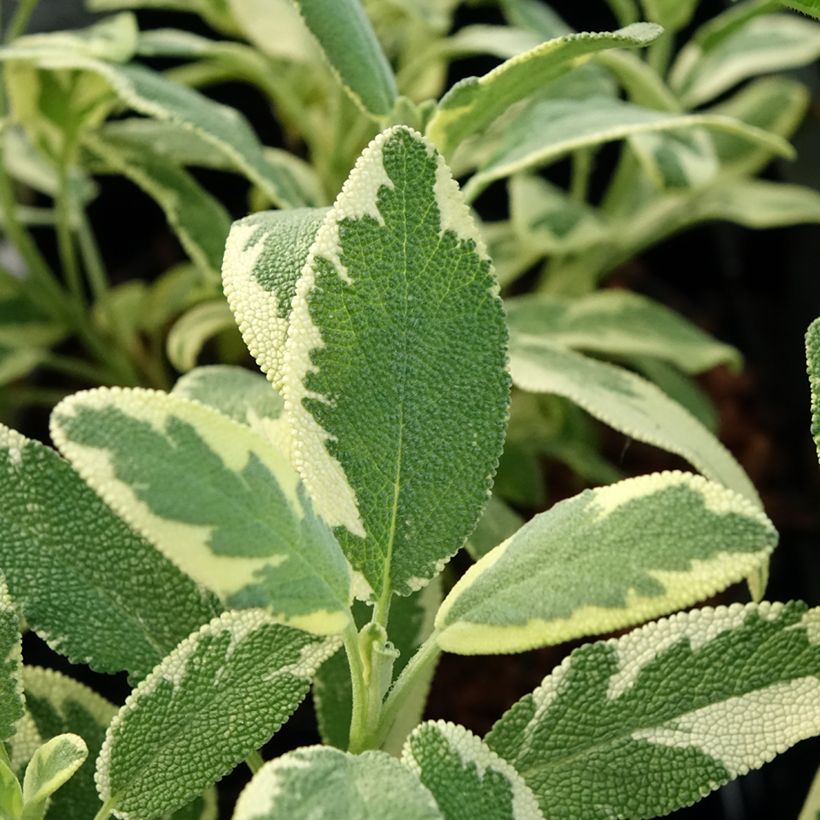

Harvest
Plant habit
Foliage
Other Herbs A to Z
Planting and care
Salvia officinalis 'Berggarten Variegated' appreciates light, well-drained, rich, moist to dry and slightly alkaline soils. Plant it in full sun in spring or early autumn.
In the ground: Space the plants 50cm (20in) apart in rows and 80cm (32in) between rows. Dig a hole (3 times the volume of the root ball), place the root ball and cover with fine soil. Firmly tamp down and water. Regularly hoe and weed, especially at the beginning of cultivation.
Add well-rotted compost every year.
During cultivation, water moderately as sage is sensitive to excess moisture, especially in winter. Only water a well-established plant in case of a very dry summer.
You can propagate sage by dividing the clumps in spring, thereby regenerating the plants and relocating them to another part of the garden. This operation is recommended every 5 years or so.
At the end of winter, lightly prune to maintain its bushy habit.
In a pot: Place a layer of gravel or clay pellets at the bottom of the pot to facilitate drainage. Fill the pot with a mixture of compost, garden soil, and sand. Place the root ball, cover with soil, and firm down. Water. Place the pot in the sun and bring it indoors in case of frost.
Cultivation
Care
Intended location
This item has not been reviewed yet - be the first to leave a review about it.
Themed vegetable gardens
Haven't found what you were looking for?
Hardiness is the lowest winter temperature a plant can endure without suffering serious damage or even dying. However, hardiness is affected by location (a sheltered area, such as a patio), protection (winter cover) and soil type (hardiness is improved by well-drained soil).

Photo Sharing Terms & Conditions
In order to encourage gardeners to interact and share their experiences, Promesse de fleurs offers various media enabling content to be uploaded onto its Site - in particular via the ‘Photo sharing’ module.
The User agrees to refrain from:
- Posting any content that is illegal, prejudicial, insulting, racist, inciteful to hatred, revisionist, contrary to public decency, that infringes on privacy or on the privacy rights of third parties, in particular the publicity rights of persons and goods, intellectual property rights, or the right to privacy.
- Submitting content on behalf of a third party;
- Impersonate the identity of a third party and/or publish any personal information about a third party;
In general, the User undertakes to refrain from any unethical behaviour.
All Content (in particular text, comments, files, images, photos, videos, creative works, etc.), which may be subject to property or intellectual property rights, image or other private rights, shall remain the property of the User, subject to the limited rights granted by the terms of the licence granted by Promesse de fleurs as stated below. Users are at liberty to publish or not to publish such Content on the Site, notably via the ‘Photo Sharing’ facility, and accept that this Content shall be made public and freely accessible, notably on the Internet.
Users further acknowledge, undertake to have ,and guarantee that they hold all necessary rights and permissions to publish such material on the Site, in particular with regard to the legislation in force pertaining to any privacy, property, intellectual property, image, or contractual rights, or rights of any other nature. By publishing such Content on the Site, Users acknowledge accepting full liability as publishers of the Content within the meaning of the law, and grant Promesse de fleurs, free of charge, an inclusive, worldwide licence for the said Content for the entire duration of its publication, including all reproduction, representation, up/downloading, displaying, performing, transmission, and storage rights.
Users also grant permission for their name to be linked to the Content and accept that this link may not always be made available.
By engaging in posting material, Users consent to their Content becoming automatically accessible on the Internet, in particular on other sites and/or blogs and/or web pages of the Promesse de fleurs site, including in particular social pages and the Promesse de fleurs catalogue.
Users may secure the removal of entrusted content free of charge by issuing a simple request via our contact form.
The flowering period indicated on our website applies to countries and regions located in USDA zone 8 (France, the United Kingdom, Ireland, the Netherlands, etc.)
It will vary according to where you live:
- In zones 9 to 10 (Italy, Spain, Greece, etc.), flowering will occur about 2 to 4 weeks earlier.
- In zones 6 to 7 (Germany, Poland, Slovenia, and lower mountainous regions), flowering will be delayed by 2 to 3 weeks.
- In zone 5 (Central Europe, Scandinavia), blooming will be delayed by 3 to 5 weeks.
In temperate climates, pruning of spring-flowering shrubs (forsythia, spireas, etc.) should be done just after flowering.
Pruning of summer-flowering shrubs (Indian Lilac, Perovskia, etc.) can be done in winter or spring.
In cold regions as well as with frost-sensitive plants, avoid pruning too early when severe frosts may still occur.
The planting period indicated on our website applies to countries and regions located in USDA zone 8 (France, United Kingdom, Ireland, Netherlands).
It will vary according to where you live:
- In Mediterranean zones (Marseille, Madrid, Milan, etc.), autumn and winter are the best planting periods.
- In continental zones (Strasbourg, Munich, Vienna, etc.), delay planting by 2 to 3 weeks in spring and bring it forward by 2 to 4 weeks in autumn.
- In mountainous regions (the Alps, Pyrenees, Carpathians, etc.), it is best to plant in late spring (May-June) or late summer (August-September).
The harvesting period indicated on our website applies to countries and regions in USDA zone 8 (France, England, Ireland, the Netherlands).
In colder areas (Scandinavia, Poland, Austria...) fruit and vegetable harvests are likely to be delayed by 3-4 weeks.
In warmer areas (Italy, Spain, Greece, etc.), harvesting will probably take place earlier, depending on weather conditions.
The sowing periods indicated on our website apply to countries and regions within USDA Zone 8 (France, UK, Ireland, Netherlands).
In colder areas (Scandinavia, Poland, Austria...), delay any outdoor sowing by 3-4 weeks, or sow under glass.
In warmer climes (Italy, Spain, Greece, etc.), bring outdoor sowing forward by a few weeks.

































